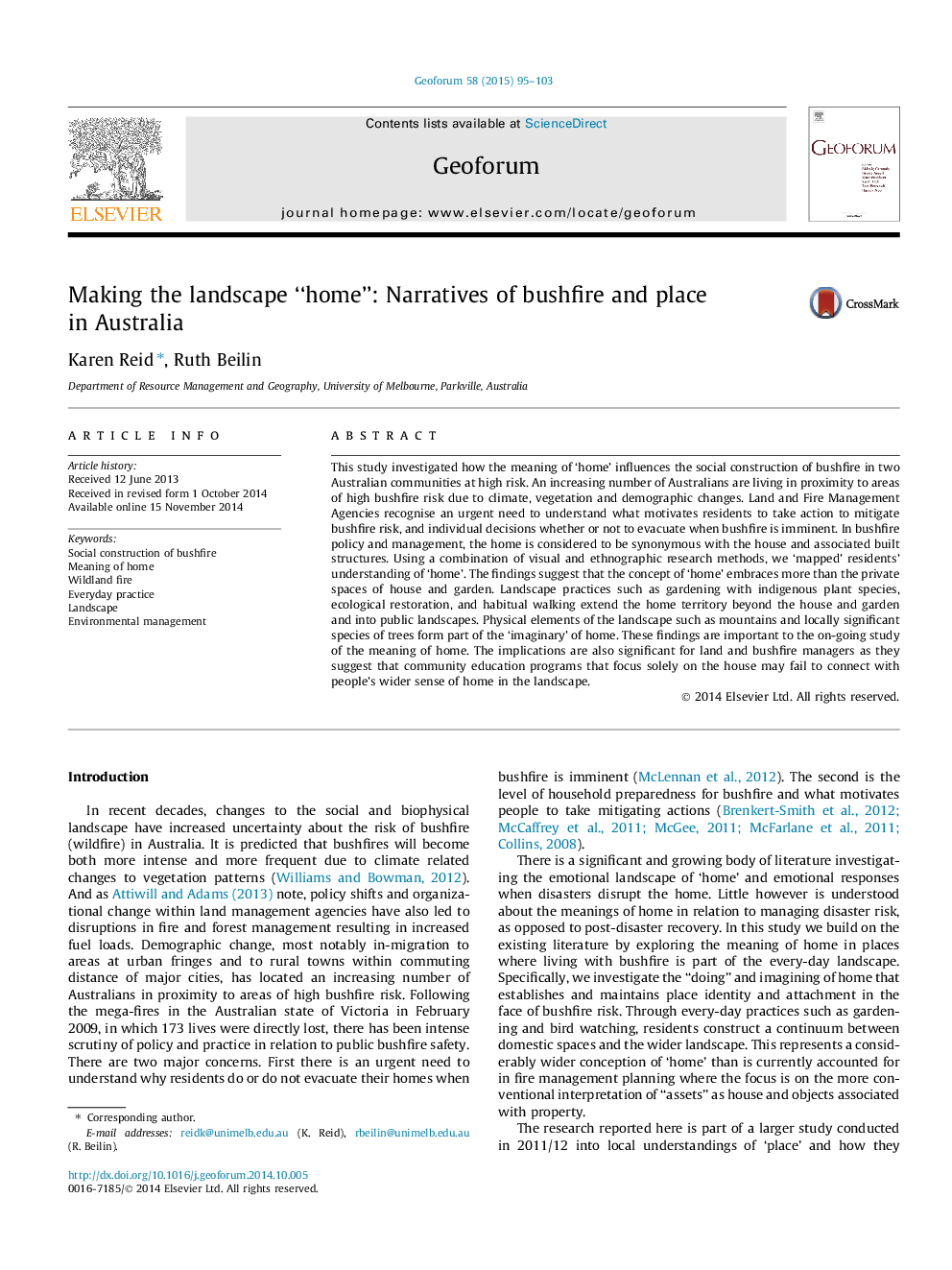| Article ID | Journal | Published Year | Pages | File Type |
|---|---|---|---|---|
| 5073854 | Geoforum | 2015 | 9 Pages |
â¢The meaning of 'home' in the construction of Australian bushfire risk was studied.â¢Practices of gardening, restoration and walking extend home into public landscapes.â¢The material elements of home can include the surrounding landscape.â¢Implications for bushfire mitigation in public and private landscapes are discussed.
This study investigated how the meaning of 'home' influences the social construction of bushfire in two Australian communities at high risk. An increasing number of Australians are living in proximity to areas of high bushfire risk due to climate, vegetation and demographic changes. Land and Fire Management Agencies recognise an urgent need to understand what motivates residents to take action to mitigate bushfire risk, and individual decisions whether or not to evacuate when bushfire is imminent. In bushfire policy and management, the home is considered to be synonymous with the house and associated built structures. Using a combination of visual and ethnographic research methods, we 'mapped' residents' understanding of 'home'. The findings suggest that the concept of 'home' embraces more than the private spaces of house and garden. Landscape practices such as gardening with indigenous plant species, ecological restoration, and habitual walking extend the home territory beyond the house and garden and into public landscapes. Physical elements of the landscape such as mountains and locally significant species of trees form part of the 'imaginary' of home. These findings are important to the on-going study of the meaning of home. The implications are also significant for land and bushfire managers as they suggest that community education programs that focus solely on the house may fail to connect with people's wider sense of home in the landscape.
